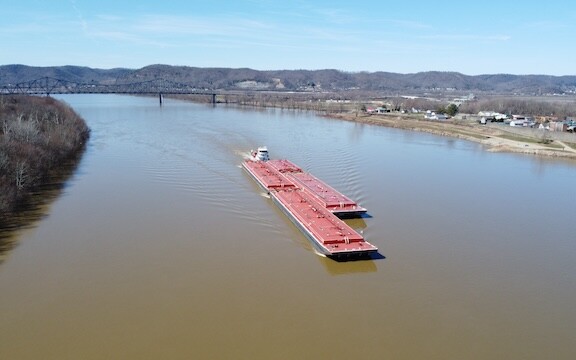A new safety report on the towing industry shows that on-the-job crewmember fatalities continue to remain low, with the industry recording its second lowest fatality rate per 100,000 employees in 2023.
The data is contained in the Coast Guard-American Waterways Operators Annual Safety Report that was released in August. For the past 30 years, the safety report has used three main measures to track towing industry safety trends: crewmember fatalities per 100,000 towing industry workers, gallons of oil spilled from tank barges per million gallons transported, and the number and severity of towing vessel casualties.
On fatalities, the report said a total of five towing vessel crewmember deaths were reported last year, of which four were directly related to towing vessel operations and one was caused by a cardiac problem.
In one incident, a crewmember fell overboard while serving as a lookout on the head of the tow during fleeting operations. The crewmember was wearing a man overboard transmitter, but it didn’t appear to work underwater.
A crewmember fell overboard while departing a lock and it is suspected that he was struck by a bumper that had come free as the barge passed through the lock, while in another incident, a pickup truck and trailer on a deck barge rolled off the stern into the water and the driver drowned.
Meanwhile, the operator of a towing vessel suffered a cardiac event related to a pre-existing condition which rendered him unconscious and caused the vessel to strike a submerged object and capsize, while the fifth crewmember was found unconscious in the berthing area and an autopsy said the death was due to natural causes with a history of substance abuse.
The report also notes that five people were killed last year as a result of four collisions between towing vessels and recreational vessels, which AWO said underscores the importance of its new Recreational Boater Safety Working Group.
The five deaths in 2023 compared to nine reported in 2022 that were either directly related to towing vessel operations or were caused by pre-existing medical conditions.
The largest number of fatalities since 2000 have been from falls, while collisions with fixed objects, line handling, being struck by moving objects and burns were also cited.
The report also evaluated the number of incidents in which tank barges spilled oil into navigable waterways. In 2023, it said 5,799 gals. of oil were spilled from 36 operational tank barge pollution incidents. These included a tank over-pressurization which was attributed to an overheated boiler, improper valve alignment during filing operations, inattention of the person in charge during transfer operations, and the sinking of a tank barge.
The tank barge spill rate was 0.1 gallons of oil per million gallons transported, which is the fourth-lowest rate recorded since 1994, noted AWO.
Jennifer Carpenter, AWO president and CEO, said the safety report has been a partnership for 30 years between the Coast Guard and the industry with the “mutual goal to advance safety in the tugboat, towboat and barge industry by taking a cooperative, non-regulatory data-driven approach to identifying safety issues.”
She said the report provides evidence that the industry has reduced the rates of both towing vessel fatalities and tank barge spills, which is “a reflection of the depth of our shared commitment to safety and sustainability, the success of our collaboration and the enduring value of this safety partnership.”




